Timken Incremental Magnetic Encoders
Reliable. Flexible. Innovative.
Timken magnetic encoder technology delivers reliable high-resolution performance for motion control applications. From motor and vector control to resolver replacement, to electric power steering, wind energy, robotics and more, our incremental encoder technology is designed to withstand the toughest environments.
- Buy securely online
- We ship globally
- MISC-CABLE 18 INCH 8 COND
- MISC-CABLE 20 ft 15 COND
- MISC-K164473 36" CABLE
-
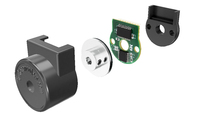 M9 Miniature Modular Magnetic Encoder
M9 Miniature Modular Magnetic Encoder
-
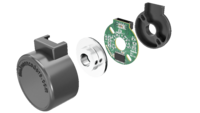 M11 Miniature Commutating Modular Magnetic Encoder
M11 Miniature Commutating Modular Magnetic Encoder
-
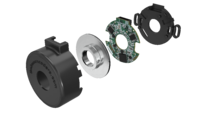 M15 Modular Magnetic Encoder
M15 Modular Magnetic Encoder
-
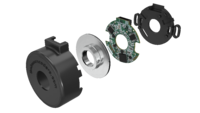 M15H High Resolution Modular Magnetic Encoder
M15H High Resolution Modular Magnetic Encoder
-
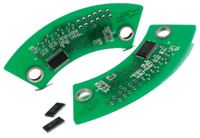 MPS160 Multiplying Encoder ASIC
MPS160 Multiplying Encoder ASIC
-
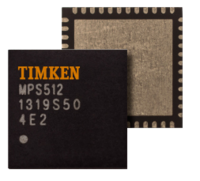 MPS512 Multiplying Encoder ASIC
MPS512 Multiplying Encoder ASIC
What is an incremental encoder?
An incremental encoder is a type of position sensor used to measure the movement, position, and speed of a rotating object, such as a motor shaft. It converts rotational motion into a series of electronic pulses, which can then be interpreted to determine the position or speed of the object. Thes types of encoders are commonly used in automation, robotics, and machinery control systems.
Key Features:
- Pulses per Revolution (PPR): The encoder generates a specific number of pulses for each complete rotation of its shaft. The resolution of an encoder is determined by the number of pulses it generates per revolution (PPR). Higher PPR values provide finer resolution.
- Quadrature Output: Incremental encoders typically have two output channels, A and B, which are 90 degrees out of phase. This quadrature output allows for the detection of both the direction of rotation and a higher resolution (up to four times the PPR).
- Reference or Index Pulse (Z): Some incremental encoders have a third output channel, called the index or reference pulse (Z). This channel provides a single pulse per revolution, which is used as a reference point to determine the absolute position after a power cycle or system reset.
- Relative Positioning: Unlike absolute encoders, incremental ones do not provide an absolute position directly. Instead, they give information about the relative position or change in position. If power is lost, the system will need to reference back to a known point to establish an absolute position.
Applications of Magnetic Incremental Encoders:
- Motion Control: Used in servo motors and stepper motors to provide feedback for precise positioning and speed control.
- Robotics: Provides real-time feedback for accurate movement and positioning.
- CNC Machines: Helps in controlling and monitoring the movement of machine components.
- Conveyor Systems: Monitors speed and direction to ensure efficient and accurate operation.
Incremental or absolute?
Incremental and absolute encoders are two common types of position sensors with distinct differences. Incremental encoders provide relative position information by generating pulses as the shaft rotates, requiring a reference point to determine absolute position after a power loss. They are simpler, less expensive, and ideal for measuring speed and direction in applications like motor feedback and robotics.
In contrast, absolute encoders provide a unique digital output for each position, offering precise and unambiguous absolute position data even after power loss. They are available in both single-turn and multi-turn versions, providing broader application versatility without requiring homing or referencing. Absolute encoders are more complex and costly, making them suitable for applications that demand high precision, reliability, and robustness, such as industrial automation, robotics, and aerospace.
HIGH PERFORMANCE ENCODERS WITH CUSTOM CONFIGURATION
Your needs are unique, and our products are designed to adapt to simple and complex applications. Purchase the encoder you need, or work with our engineers for a fully integrated design.
Our magnetic incremental rotary encoders are available in compact modular designs, standalone ASICS and custom or standard kits.
Contact us for more information.
Your custom configuration of in-stock encoder components typically takes 1 week for delivery of U.S. orders.
